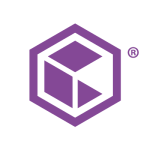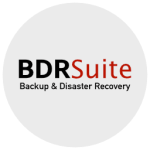My main use case for using the HPE Zerto Software is disaster recovery.
The ability to fail workloads over between data centers has benefited my organization significantly. HPE Zerto Software's continuous data replication is very important to my organization.
The features I appreciate the most about HPE Zerto Software are the automated failover and orchestration, and then the journal for point-in-time recovery.
I don't use HPE Zerto Software directly; it's used by my team, however, they're very complimentary of it.
It's easy to use and does what it says.
HPE Zerto Software has impacted my RTOs or RPOs, and the recovery speed has improved significantly compared to other disaster recovery solutions I've used; it's been really good. An example is that our snapshots were only every 15 minutes, but with HPE Zerto Software replication, our recovery times are in seconds, not minutes.
The solution has helped to reduce my organization's DR testing. I do not know by how much. We haven't reallocated the time saved to other tasks; it just allows us to do more DR testing and recovery, enabling us to go faster in that space.
I am currently using a cyber vault solution for immutable data copies to ensure recovery from a cyberattack. We have multiple solutions: we use Commvault, Cloud MRR, and we also use safe mode on all of our pure storage. When considering a cyber vault solution, cost is probably the most important factor first, and then simplicity to implement.
To improve HPE Zerto Software, I would suggest that the upgrade process is a little bit average and challenging at the moment, rather than necessarily adding features.
I have been using the HPE Zerto Software for two and a half years.
I assess the stability and reliability of HPE Zerto Software as being fine. I only had one small issue a while ago, and that was fixed eventually; it was just one small issue. It didn't cause an outage.
To date, HPE Zerto Software has scaled fine for the growing needs of my organization. I have expanded usage. The expansion process was very smooth.
I evaluate the technical support for HPE Zerto Software as okay, about average. On a scale of one to ten for technical support/customer service, I would give them a seven.
Prior to adopting HPE Zerto Software, I was using another solution that addresses similar needs: storage replication. The factor that led me to consider a change was capability.
We didn't really go through an evaluation process, so I can't elaborate on what stood out in that regard.
We used a partner to support us, and it took us a while to get it working. Now it's embedded and it's working.
I have not seen a return on investment with HPE Zerto Software, and nothing specific comes to mind.
My experience with the pricing, setup costs, and licensing has been fine.
Before selecting HPE Zerto Software, I considered just standard backup solutions.
My advice to another organization considering using HPE Zerto Software is to go for it.
Overall, I would rate HPE Zerto Software a nine out of ten.


















